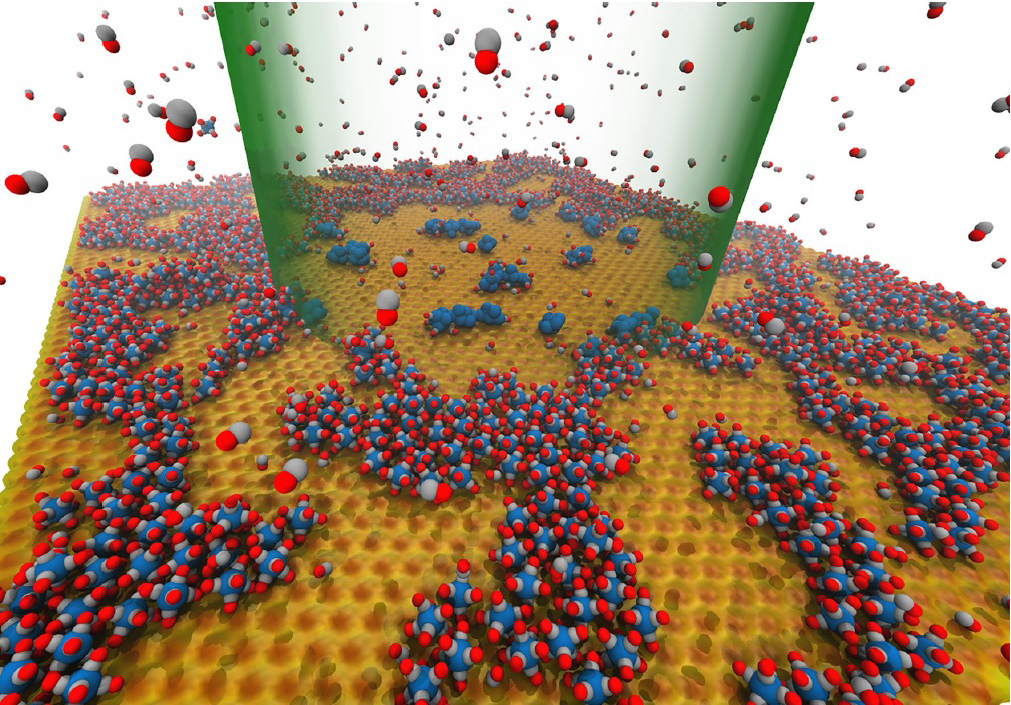October 20, 2016
In the recent paper [1] published by the members of MBN Research Center in the European Physical Journal D, a new molecular dynamics approach for computational modeling of irradiation-driven chemical transformations of complex molecular systems was suggested.
The irradiation-driven molecular dynamics (IDMD) accounts for the random, local quantum transformations in the system (e.g., molecular bond breaks, ionization and changes in molecular topologies) during the irradiation. The IDMD approach has been implemented into MBN Explorer, capable to operate with a large library of classical potentials, many-body force fields and their combinations.

In the paper [1], the introduced IDMD methodology was applied for studying the irradiation-driven chemistry caused by focused electron beam induced deposition (FEBID), which is one of emerging technologies in materials science. It was demonstrated that knowing the interaction parameters for the fragments of the molecular system arising in the course of irradiation one can reproduce well experimental observations and make predictions about the morphology and molecular composition of nanostructures that emerge on the surface during the FEBID process.
The introduced IDMD methodology opens a broad range of possibilities for the atomistic description and modeling of irradiation-driven modifications and chemistry of complex molecular systems in many research areas in which irradiation of materials or complex molecular systems plays a role.
[1] Gennady B. Sushko, Ilia A. Solov'yov, and Andrey V. Solov'yov, Molecular dynamics for irradiation driven chemistry: application to the FEBID process, Eur. Phys. J. D 70, 217 (2016)